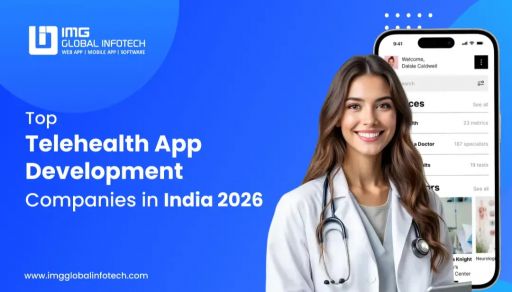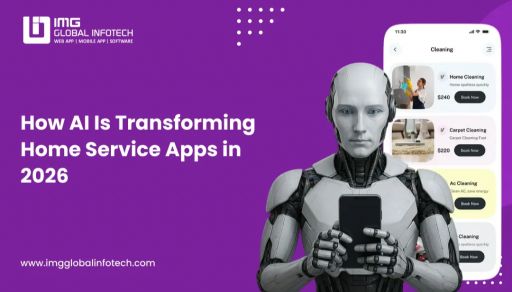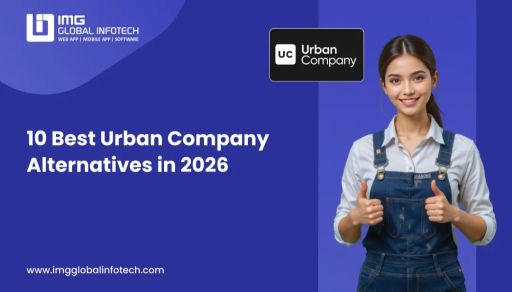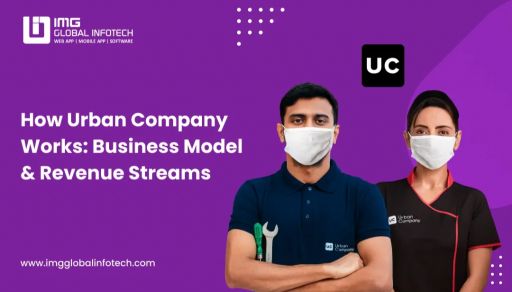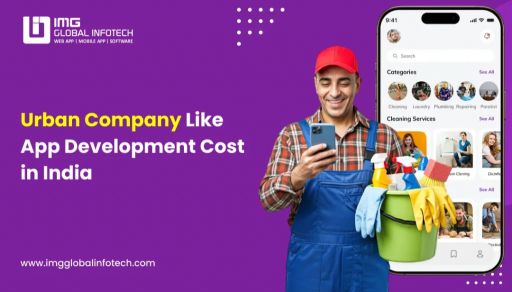Food Delivery App Development: A Complete Guide
Dipti Singhal
Apr 24, 2025

Investing in a food ordering app can transform your restaurant business but only if it works properly. An inadequate app can hurt your customer experience that may affect your business growth. Many startups or businesses face challenges not because of their business strategy, but because of the app issues.
In fact, 34% of global users say slow delivery times are their top complaint when ordering food. A user places an order but the restaurant doesn’t get the notification, delivery partner wastes time because the map won’t load properly. These kinds of technical hiccups result in missed deliveries, unhappy users, and revenue loss.
That’s why a high-performing, feature-rich and user-friendly app is necessary for your business, that streamlines everything from order placement to doorstep delivery, ensuring the whole process runs smoothly.
This guide, we’ll break down everything you need to know while developing a food delivery app from must-have features to choosing the right food app developers team. Let’s skip the fluff and dive into what really matters.
Market Share of Food Delivery Apps and Statistics
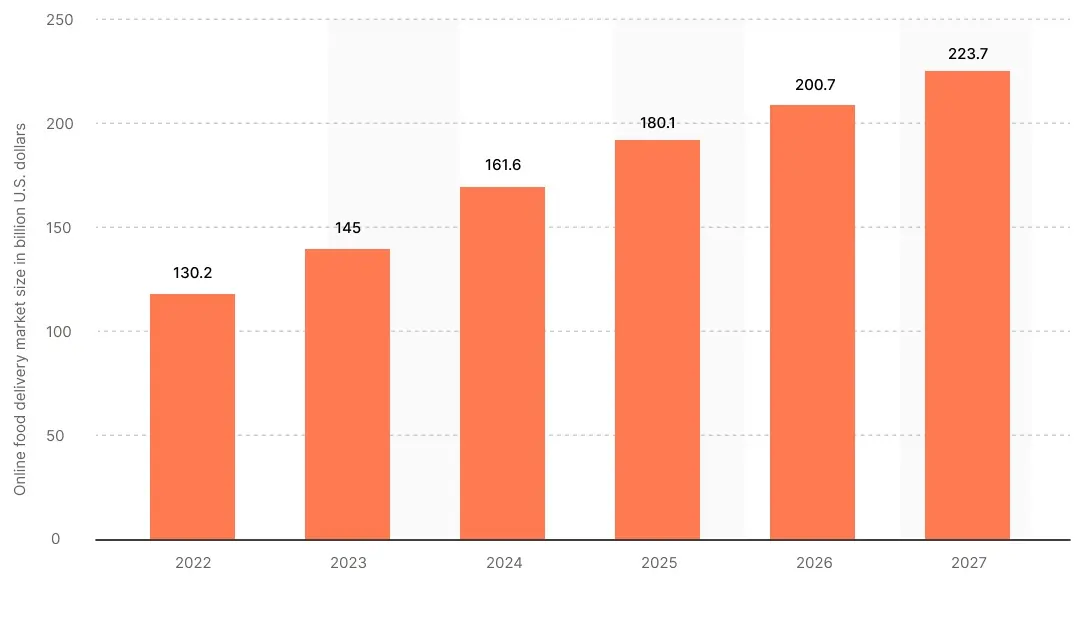
- In 2025, the global online food delivery industry is projected to grow $191 billion USD, on track to reach $223.7 billion USD by 2027 (Statista).
- The food delivery app market is expected to generate $401 billion USD in revenue this year, growing at an impressive compound annual growth rate (CAGR) of 10.4%.
- In 2025, the USA is estimated to exceed 135 million users, as mobile-first behavior and digital dependency increase across demographics.
- By the end of 2023, app-based food delivery services in the U.S. were valued at $24.4 billion, a number that has since climbed further in 2025 as both restaurant partnerships and user frequency continue to grow.
- In terms of infrastructure, digital platforms and online food delivery apps have witnessed a 30% surge in adoption over recent years, driven by seamless UI/UX, contactless delivery features, and real-time tracking capabilities.
These food apps can deliver fast and instant food. Customers love the convenience of ordering food from these apps.
How does the Food Delivery Mobile App work?
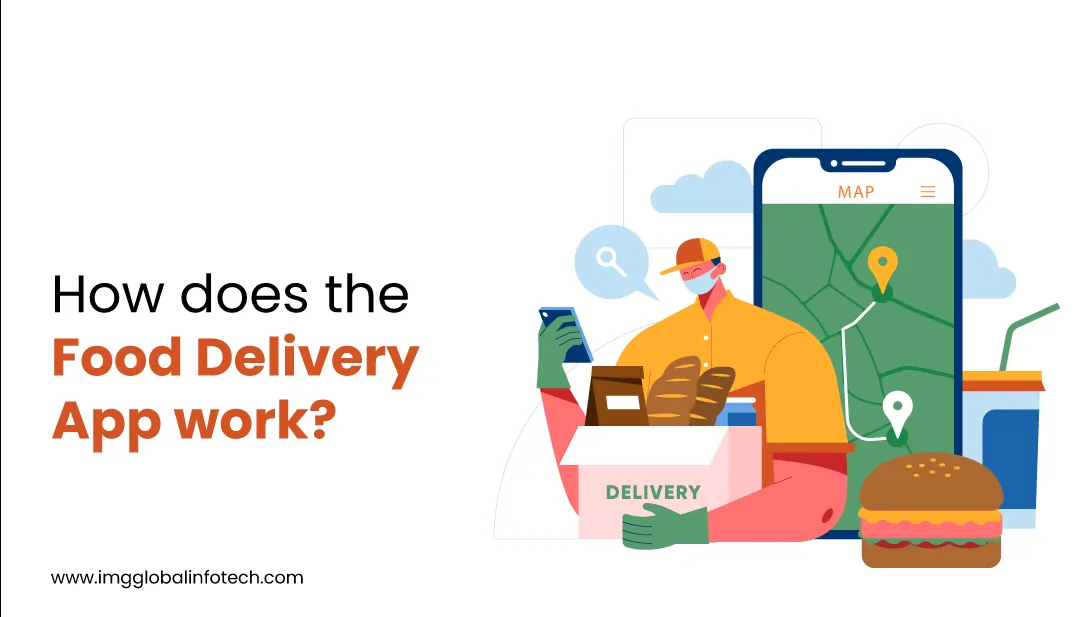
- User Search: The user browses through the menu and selects the dish they want to order. Our experts have added filters to the app to make the decision-making process more manageable.
- Confirmation by the User: After placing an order, the user confirms it and selects the payment method. You can use any form such as COD, Credit Card or Debit Card, Ewallet, or integrated in-app pocket. You can use any of these options to make payments.
- The Restaurant Confirms Your Order: After you have completed the process. The restaurant confirms your order and gives you an estimate of the time it will take to deliver your food.
- Restaurant Prepares Food: The restaurant prepares food for delivery.
- Valet Collects the Order: Once the order has been prepared. The valet takes the order and delivers it.
- Delivery of the Order: The valet delivers your order to the destination.
- You can use in-app features such as calls, order tracking, and location tracking services. The valets can quickly deliver food faster because it is easier to use.
Soon Artificial Intelligence Solutions will take over the responsibility. Drones and robots will deliver the food. Businesses need to offer picture delivery options to make their customers happy. Drones require fewer instructions and can provide food quickly. Once the order has been delivered, the customer is paid. The app owner splits the profit between himself and the restaurant owner.
Although the work process is straightforward, there are some additional challenges you may face as a business owner when discussing Food delivery application development.
There are many food delivery app business models to choose from Food Delivery App without Delivery.
The famous on-demand food delivery apps allow users to connect with restaurants and food delivery companies. The app allows users to place orders, and restaurants can deliver orders. The app is not responsible for delivery.
Food Delivery App Business Models: Which One is Best Fit for You?
The food delivery industry has rapidly transformed in recent years, offering businesses a variety of models according to ever-evolving customer expectations. Choosing the right business model isn’t just a matter of preference, it directly impacts your app’s functionality, revenue streams, and operational demands.
To build a successful food delivery app, you must start with a clear vision and a model that fits your goals. Below, we explore the most common types of food delivery app business models and how they operate with real-world examples for context.
1. Aggregator Model
The aggregator model functions as a marketplace that connects customers with multiple restaurants. It facilitates menu browsing and order placement, while restaurants handle the delivery logistics independently.
How It Works:
-
Customers browse menus, place orders through the app.
-
Orders are sent to restaurants, which prepare and deliver the food.
-
The platform earns through restaurant listing fees and commissions.
Example: Just Eat (UK)
2. Logistics-Supported Model (Multi-Vendor Marketplace)
This model expands on the aggregator by managing logistics. The platform not only facilitates orders but also takes responsibility for delivery through its own fleet or delivery partners.
How It Works:
-
Users place orders via the app.
-
Restaurants prepare food; the platform assigns delivery personnel.
-
Revenue is generated from commissions and delivery/service fees.
Example: Deliveroo (UK, UAE)
3. Single Restaurant Model
In this model, a single restaurant or chain creates a restaurant app to manage its own online ordering and delivery system, bypassing third-party platforms entirely.
How It Works:
-
Customers order directly through the restaurant’s app.
-
The business manages food prep and delivery (either in-house or outsourced).
-
The brand gains full control over pricing, promotions, and customer engagement.
Example: Domino’s (Global)
4. Cloud Kitchen Model (Virtual Restaurants)
Cloud kitchens operate without a physical dining location, focusing exclusively on fulfilling delivery orders online. These kitchens often serve multiple brands from a centralized space.
How It Works:
-
Orders are placed through the app; no dine-in options.
-
Food is prepared in a centralized kitchen and delivered via the app.
-
Businesses save on real estate and focus purely on online operations.
Example: Reef Technology (USA)
5. Subscription-Based Model
This model offers premium features such as free or discounted deliveries through a paid subscription plan. It's designed to increase loyalty and repeat orders.
How It Works:
-
Customers pay a monthly/annual fee for benefits like zero delivery charges.
-
The platform benefits from recurring revenue and stronger user retention.
Example: DashPass by DoorDash (USA)
6. Meal Kit Delivery Model
Unlike traditional food delivery, these platforms focus on delivering complete meal kits that include fresh ingredients and cooking instructions on it.
How It Works:
-
Customers receive ingredients or groceries instead of prepared meals.
-
Apps partner with supermarkets or meal kit services.
-
Revenue comes from delivery fees, commissions, or subscription models.
Example: HelloFresh (USA, UK)
7. Hyperlocal Delivery Model
Hyperlocal apps serve smaller geographic areas, often focusing on neighborhoods or specific zones. This model prioritizes speed and local vendor support.
How It Works:
-
Users can order only from vendors within a limited radius.
-
Delivery is typically fast and handled by local riders or vendors.
-
Revenue is earned from commission and delivery charges.
Example: Zomato (India, UAE)
8. Corporate Food Delivery Model
Built for companies and office environments, this food delivery business model simplifies bulk food ordering for meetings, events, and team meals.
How It Works:
-
Businesses sign up for employee meal plans or event catering.
-
Orders are placed via a centralized system.
-
The platform earns through enterprise contracts and volume discounts.
Example: ezCater (USA, UK)
How to Choose the Right Model for Your Restaurant?
Selecting the right business model depends on several key factors:
-
Market Demand: Are you targeting everyday consumers, corporate clients, or niche markets like health-conscious eaters or families?
-
Logistics Capabilities: Do you have the resources to manage deliveries, or should you partner with third parties?
-
Revenue Goals: Are you aiming for high-volume transactions, recurring revenue, or brand building?
-
Investment Level: Cloud kitchens and fully integrated apps require higher initial investment compared to aggregator models.
-
Features to Consider While Food Ordering App Development
1. Food Delivery Mobile App - User Panel
After downloading and installing the app from either the Google Play Store (or Apple App Store), customers must log in and register.
- Login: The login process is simple with Facebook, Gmail, or a single OTP confirmation sent to the mobile number.
- Location: When discussing food delivery app development for startups and business, pick location is an important feature. The list of available restaurants will be displayed based on the user's location.
- Homepage: It is essential to carefully consider the relevancy and features of a Zomato app's website. Your app should show you nearby restaurants and the most popular dishes.
- Menu: Another prominent feature in an on-demand food aggregator app is the menu. Before making final payments, let the customer review the order and other details.
- Place Pickup on the Map: You can let GPS find your location to recognize you or manually place your pick-up location on the map.
- Payment: Once everything has been verified and checked, it's time to make the final payment. The user can choose the payment method that is most convenient for them.
- Review Screen: The development of a review section is already included in the cost of the food delivery app. Allow users to leave detailed reviews and comments about each restaurant in this section.
- Past orders: The app will show past orders, making reorder easier.
- Discounts and Offers: Keep your customers informed about deals or offers from their favorite restaurants. Your food delivery app developer should include push notifications.
- Track Delivery Boy: Track the exact location and track his movements in real-time.
- Search: This section is located at the top of the homepage's home screen. It is mandatory for on-demand food delivery apps. Price comparison is an essential factor when it comes to food delivery apps. Allow users to search for a specific dish by using the food name.
- Refine search: An entrepreneur or a company can have the option to filter things such as delivery time, reviews, and offers and then sort the list according to the user's preference for ascending or descending price.
2. Food Delivery App - Restaurant Panel
Restaurant owners must register and log in from the app and provide additional information to verify their business. Restaurant app Developers will provide a detailed explanation of the operation to restaurant owners.
- Dashboard: Once the restaurant owner has created an account. They return to the dashboard or home page. They can track the status of pending, completed, and orders on their way to delivery. This gives them a better overview and summary of what's going on.
- Accept or decline orders: It is essential to on-demand food delivery app development in the USA. Delivering food on time is a significant concern. If the delivery takes longer than expected, users can cancel their order. This will be considered a loss and may leave a wrong impression. Delivery is only sometimes possible at all restaurants. It depends on whether the rider is available to accept or decline the order.
- Manage Restaurant account: Each restaurant can create an account by uploading its pictures, logo, food images, and hours of operation. You can also offer discounts to their customers for particular items.
- Payment: In the payment section, users can transfer money to banks or other platforms such as PayPal or Wallet App. You can also view daily revenue reports and all history.
3. Food Delivery App-Rider Panel
We first ask entrepreneurs if they would like to be part of a rider's board when they come to us with questions about how to create a food delivery app for USA.
- Login: The admin will provide login credentials to the rider to access the application.
- Order Request: The customer will place an order and be assigned on a location-based basis. Every order will include the order ID, customer's name, and delivery address. The home delivery application allows the rider to accept or reject the delivery request. If permitted, the rider can also let the customer see his details.
- Order Delivery: The driver will deliver the order to the customer and complete the order. The driver can change order status such as placed, packed, and on the way.
- Order History/Logs: This panel allows the delivery man to view past orders. Each element of an app such as a food delivery app like deliveroo must be taken care of when discussing the development of an app. Verification can be made more accessible using status, date range, and I'D filters.
- Call/Chat - Zomato app development costs include integrating in-app messaging and calling. This allows customers and delivery personnel to communicate more efficiently.
- Push Notifications: The delivery boy will receive a push notification from the customer for any updates or changes to the restaurant panel, if necessary.
- Get Paid Offline/Wallet: Delivery man paid monthly or weekly by admin. The delivery man is paid by admin weekly or monthly. Delivery boy can have payment in his in-app wallet if he has an in-app wallet. Otherwise, the price will be transferred to a bank account.
- GPS Tracking: The customer and the restaurant need to track the delivery boy's location. GPS tracking allows the customer to guide the delivery man to their exact location.
- Transaction History: This information must be mentioned in the food ordering app documentation. This allows the delivery man to check his past transactions and view his total income with just one click.
- Online Support: It is vital to include this feature in your app. To get immediate help, the delivery man can contact the support team if he has any problems.
- Google Map Navigation: The delivery boy is responsible for delivering the order if accepted. He can see the customer's address on the map and navigate to the designated area through Google Maps.
Advanced Features of the Food Ordering App
Queue algorithm- Order assignment will go through the queue algorithm. The system will automatically detect the current location of the delivery boy and assign him a nearby boy. Administrators can adjust the area that it will serve for queuing.
Push Notifications- Push notifications are a vital feature that Mobile Application Development companies must not ignore. The user must be informed about the status of their order promptly. Users will be notified regularly when their food arrives.
Accurate time Analytics- Real-time analytics panel powered by DB infrastructures and algorithms. It helps you keep control of your operational data and allows you to reach critical events in time to create projections. Analytics Panel gives you real-time revenue projections and reports, allowing you to drive your business by numbers.
CMS News & Articles - Developers can concentrate on different aspects of the app. Administrators can post news and articles about new restaurants in the area or feature a dish.
- You can also add value-added features
- Get more discounts with coupons and vouchers
- The floating window allows live tracking (P2P).
- Smartwatch Extension
- Lock Screen Widgets
- Share the food order on Social Media
- Order delivery and pick-up
- See what your friends order from nearby.
- Book tables at nearby restaurants
Search by Meal Type- Let your app developer simplify navigation for customers. Instead of showing nearby restaurant lists, display options such as breakfast, lunch, and dinner. Different sections should be provided for different food types and user interests.
For example, a section for fast food can be made and delivered in a matter of minutes. The app can also include an area for people concerned about their health and diet. After choosing the main menu item, the user can select different dishes or beverages. The user has the option to customize the meal. This will allow the user to be more flexible in choosing what they want and give an excellent impression of the app.
How do you create a food delivery app?
The user interface makes the On-Demand Food Delivery app development stand out. It's simple and intuitive. A UX/UI designer with experience is an option. A team of two backend developers and two mobile app developers can be sufficient for successful food ordering app development. When an app breaks down, it is essential to have quality assurance and testing professionals.
- Project Manager
- UX/UI Developers
- Android/IOS developers
- Backend Developers
- QA Teams
- Delivery Manager
What is the cost to build an app like Uber Eats, Zomato?
The food delivery app development cost in the USA depends on the features and functionalities you want to include in your app. To give you an idea of the cost, a primary food delivery app in usa can range between $20,000 and $50,000, while a more complex solution might run around $50,000+.
- Developers based in the United States: $50-250 an hour
- Developers based in Eastern Europe: $30-150 an hour
- India Food App Development Costs: $20-$80 an Hour
The below-described estimate can also be used to calculate the cost of your app (For developing an affordable app with limited features, Android coding, and Android coding); the following bifurcation of activities can be used to calculate the cost of food delivery, apps.
A significant fact to keep in mind is that an iOS app can be developed for slightly less than an Android one. This is because it requires extensive app testing, which costs much money.
Choose IMG Global Infotech as Your Food Delivery App Development Partner
Choosing the right technology partner is crucial for launching a successful food delivery app, and IMG Global Infotech stands out as a trusted name in on-demand food delivery app development. Our solutions are crafted to fit your business model, whether you're building a multi-vendor marketplace, a cloud kitchen platform, or a branded single-restaurant app.
Our commitment doesn’t stop at development. We provide post- launch support and maintenance,optimize performance, implement new features, and stay ahead of industry trends. With a reputation for delivering quality projects on time and within budget, IMG Global Infotech offers a cost-effective, agile development process that meets your deadlines without compromising on innovation or quality.
Dipti Singhal is a skilled Content Writing Specialist at IMG Global Infotech, with strong expertise in creating engaging, SEO-optimized content for various industries. She focuses on blending storytelling with effective keyword strategies to help businesses connect with their audience and improve their online visibility. Passionate about delivering high-quality content that drives real results, Dipti plays an essential role in strengthening the company’s digital presence.


